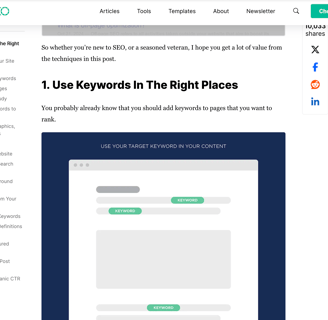How to Be in the Top 1% of Messaging: A Proven Strategy for Better Communication
4/4/20254 min read


In today’s digital world, mastering messaging is key to standing out from the noise. Whether you're sending an email, writing a blog post, or creating social media content, effective communication can make all the difference in getting noticed and building stronger connections with your audience.
After spending hours researching what makes messaging truly effective (and investing a lot of money in the process), I’ve learned strategies that will help you communicate more clearly, engage better, and achieve greater results. The best part? You don’t have to spend the time and money figuring it out yourself.
If you're ready to elevate your messaging game, here are the proven strategies that will help you get noticed and drive more engagement.
Focus on 3-4 Topics: Keep Your Message Simple and Clear
Studies show that when people are presented with five or more ideas at once, they become overwhelmed, leading to lower engagement and retention. This is why simplicity is key when it comes to messaging.
When crafting your message, focus on 3-4 key points. This keeps your content clear, digestible, and easy to understand. Whether you’re writing a product description, an email, or social media content, limiting your topics to just a few makes your message more likely to be read and remembered.
In summary:
Too many ideas = confusion
Just the right amount = clarity and action
Why Fewer Topics Work
By keeping your message focused on a small number of important ideas, you not only make it easier for your audience to engage, but you also increase the likelihood that they’ll take action. Studies show that the most effective messaging sticks to 3-4 main points to prevent information overload.
Tell Stories and Use Visuals to Boost Engagement
Humans are wired for stories. Research shows that stories and visuals help people remember your message far more effectively than plain information alone. Whether you’re writing a blog post, crafting a landing page, or designing an advertisement, visual storytelling is crucial for driving engagement.
Visuals (images, infographics, or videos) capture attention quickly.
Stories allow you to build a deeper connection with your audience, making your message resonate longer.
To integrate this into your messaging, consider:
Using customer success stories or case studies to showcase how your product or service solves problems.
Including visuals (like photos, charts, or illustrations) to emphasize key points.
Telling personal stories that demonstrate your brand’s values or mission.
This approach isn’t just about engagement; it's about creating content that sticks in the minds of your audience, making them more likely to take action or share your content.
Use Emotion to Drive Message Sharing
Emotion is a powerful driver of sharing. Studies reveal that the most viral content often evokes one of the following emotions:
Inspiration
Anger
Fear
Humor
Content that makes people feel these emotions is far more likely to be shared and engaged with. This doesn’t mean you should manipulate emotions, but it does mean that you should consider how your message might make people feel.
What emotions should you target?
Inspiration: Create content that motivates or empowers your audience.
Anger: Share insights that challenge the status quo or spark a conversation.
Fear: Present solutions to problems that might cause urgency or concern.
Humor: Make people laugh to build rapport and create positive associations with your brand.
Remember, emotion drives action. When your message sparks an emotional reaction, it becomes far more likely that people will share it, leading to more visibility and engagement.
Why These Messaging Strategies Work
You may be wondering, why do these strategies actually work? The answer lies in the psychology of human behavior:
Clarity: People are more likely to take action when they understand your message clearly. Presenting only 3-4 main points keeps things simple and prevents confusion.
Connection: Stories and visuals help form emotional connections. People remember stories, and they relate to visuals more than words alone.
Emotion: Humans are emotional beings. When your messaging taps into emotions, it becomes more powerful and memorable, increasing the chance that it will be shared.
These strategies create messages that stick, generate more engagement, and ultimately inspire action.
How to Implement These Tips for Effective Messaging
Ready to implement these strategies? Here are some actionable steps you can take to apply these principles to your messaging:
Simplify Your Message: Limit your messaging to 3-4 key points. Whether you’re sending an email or creating a blog post, focus on the most important ideas.
Tell a Story: Don’t just present facts—tell a story. Use real-life examples, customer testimonials, or personal experiences to connect with your audience on a deeper level.
Use Visuals: Incorporate images, videos, or infographics into your content. Visuals help break up text and make your message more engaging and shareable.
Evoke Emotion: Think about how your message can inspire, entertain, or even create a sense of urgency. The right emotional tone will make your message stand out and encourage people to act
Conclusion: Transform Your Messaging for Greater Impact
By focusing on clear, concise content, engaging storytelling, and emotional appeal, you’ll be well on your way to mastering messaging. These strategies aren’t just for big brands—they’re for anyone who wants to communicate effectively and stand out in a crowded digital world.
The key to effective messaging lies in making your message easy to understand, emotionally compelling, and shareable. By following the tips outlined above, you’ll create content that doesn’t just get noticed—it gets shared, remembered, and acted upon.
So, if you’re ready to take your messaging to the next level and create content that gets results, start implementing these tips today. Your audience—and your business—will thank you for it.
Sources:
Cognitive Load Theory and Messaging
Sweller, J. (1988). Cognitive load during problem solving: Effects on learning. Cognitive Science, 12(2), 257-285.The Power of Visual Storytelling
Bertamini, M., & Pavan, G. (2015). Visual storytelling and memory. Psychology of Aesthetics, Creativity, and the Arts, 9(2), 151–162.The Science Behind Emotional Content
Berger, J. (2011). The Psychology of Sharing: Why We Share What We Share. Social Media and Viral Marketing Study, Wharton School.Emotions and the Spread of Content
Kietzmann, J., Hermkens, K., McCarthy, I., & Silvestre, B. (2011). Social media? Get serious! Understanding the functional building blocks of social media. Business Horizons, 54(3), 241-251.Simplifying Content for Better Engagement
Nielsen, J. (2012). Usability 101: Introduction to Usability. Nielsen Norman Group.




